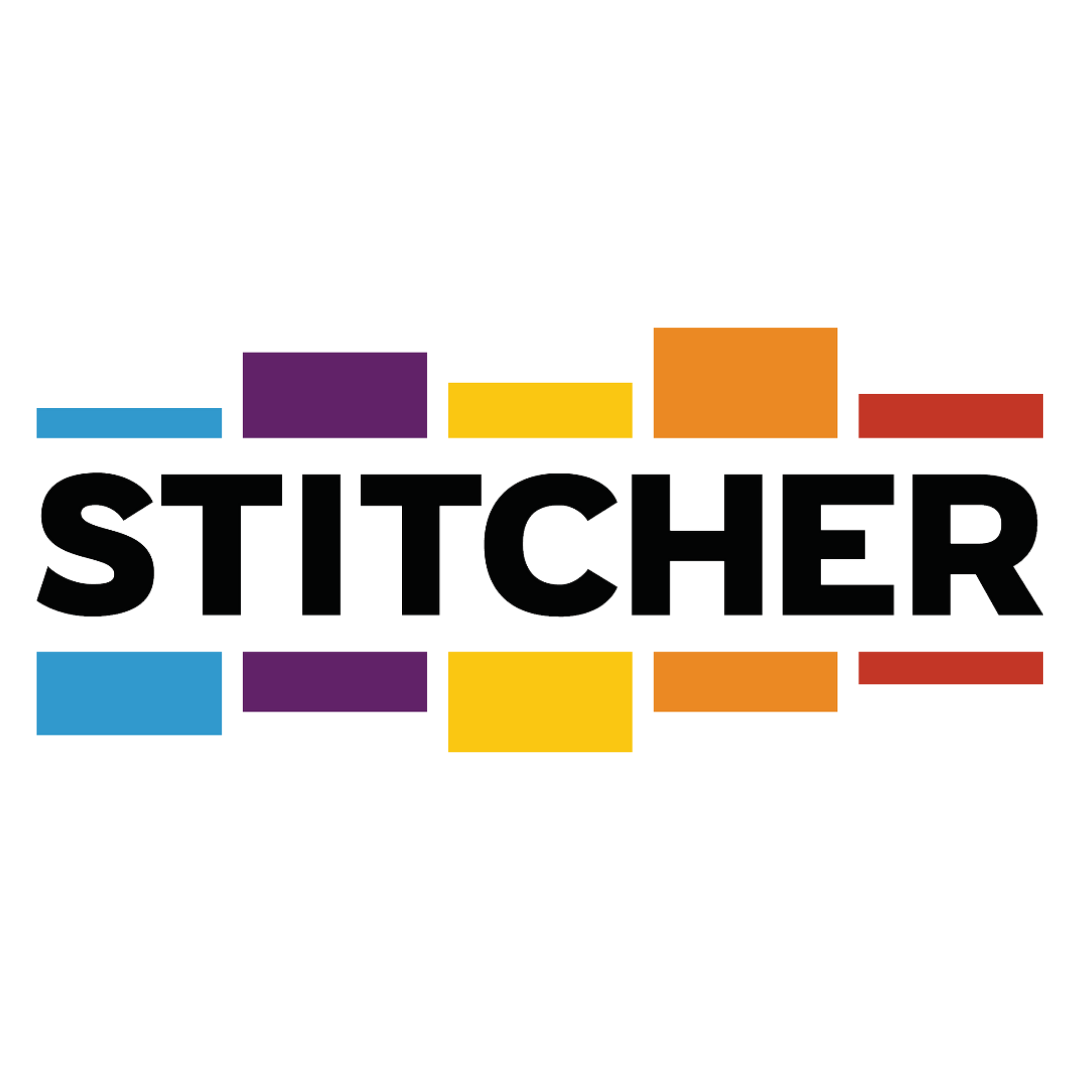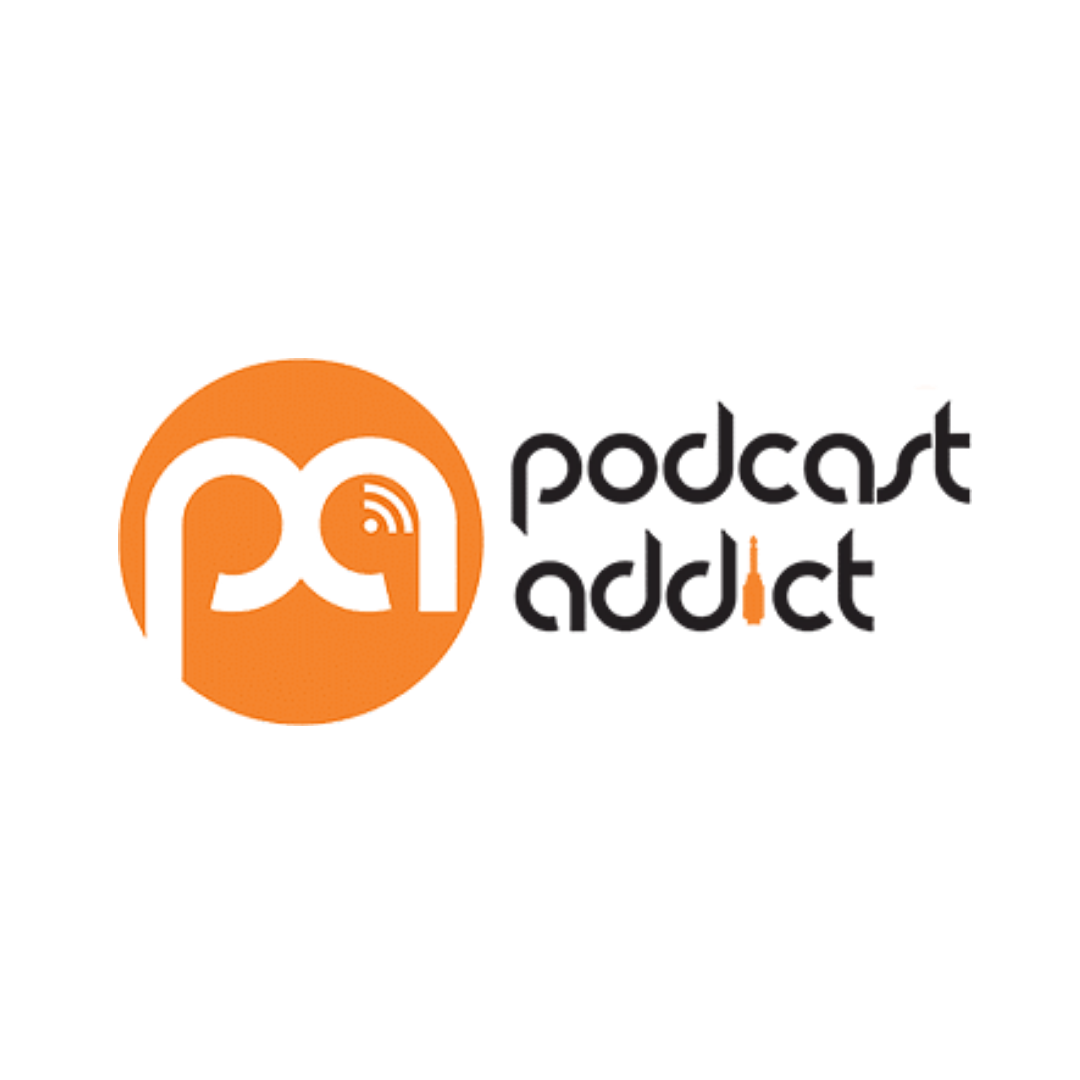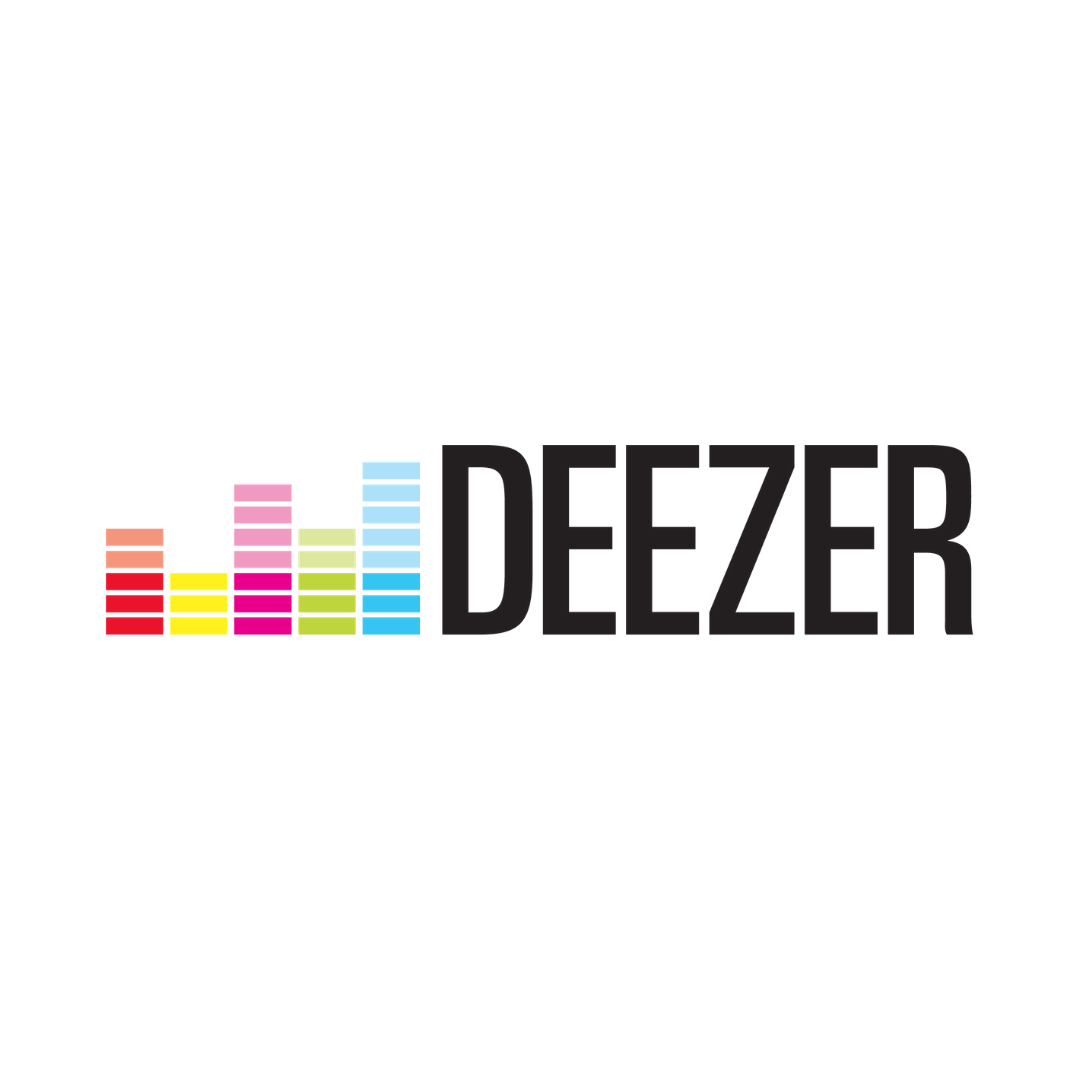Logo Design Process with Ian Paget
Join Our Newsletter
Introduction
Ian Paget, also known as Logo Geek, is a UK based graphic designer located in Manchester, who specialises in logo and brand identity design.
Show Notes
Ian Paget, also known as Logo Geek, is a UK based graphic designer located in Manchester, who specialises in logo and brand identity design. He is the founder of Logo Geek, a professional logo design service, design blog, podcast and community.
In this episode, I asked Ian about his design process and how he goes about creating logos and other visual assets. He shares his insights on how to ensure a logo can represent a brand.
Among other things the episode covers:
- How to approach the dsign of symbols
- Meeting clients expectations around what visual creations can do for them.
- Ian’s approach in a naming project for a client.
- The common reasons why clients decide to improve their logos, and visual identity
- How a visual such as a logo represents what someone wants to be about
- Protecting assets such as logos through securing intellectual property
LinkedIn: Ian Paget
Twitter: @ianpaget
Website: logogeek.uk
Valuable Resources:
Register to attend the Brand Tuned book launch on 28 September 2021
Brand Tuned Accelerator
www.brandtuned.com
Transcript
Shireen Smith: Ian Paget is a graphic designer who focuses on logo design and brand identity, working with clients globally. He also hosts a podcast under the name “Logo Geek”. Ian has agreed to take part in this research I'm doing to better understand what customers want from branding. So Ian, welcome to the Brand Tuned Podcast.
Ian Paget: Thank you. I'm looking forward to this conversation.
Shireen Smith: Good. Tell me how you get involved with helping your clients in terms of logo design or whatever they come to you for?
Ian Paget: Yeah, sure. So, because of the brand, I built around logo design, most people that come to me, they specifically require a logo design or identity. But a lot of the time is just a logo. And then if they need any additional assets, such as stationery, or things like packaging, or websites, I get involved in that as well and basically expand the identity that I've created through the logo. I can go in more detail if you want.
Shireen Smith: Okay, well, we might come to that. But at what stage are they in their business journey when they just want a logo.
Ian Paget: Sure. Well, it can really vary. Most of the time it is startups. So, it's usually individuals that are just starting out. They have the capabilities of, you know, doing their own website using something like WordPress. But they know that by having an identity from the outset, they can become recognizable to their customers, and they see it as an investment. But then quite a lot of my clients are at that point where they did everything themselves from the beginning and they've been in business for a few years. So, they either did a DIY job, or they use one of these sorts of AI generators, or, you know, maybe five or something like that. And that's kind of done the job for them for, you know, two or three years. But they usually get to a point where they outgrow that. They can see that it doesn't represent who they are now and they would like to redesign their logo and bring it in line with everything else that they're doing.
Shireen Smith: Right. How do you just do a logo design? I mean, how do you possibly do that?
Ian Paget: Sure. Okay, so how I approach it is what I describe as a goal-based design process. So rather than just simply taking the company name, and making a pretty looking picture, which is why I think a lot of these lower-end solutions do, I create a list of goals, which we're working towards, which just allows it to be a bit more strategy-focus. So, it's a case of understanding three key areas. So, who they are as a company and what makes them special, then looking at their competition so that we can differentiate from what's out there, and then lastly, understanding the type of audience that they're wanting to target so that I can use certain aesthetics to help attract that type of person. How I approach that is by basically asking questions. So, I have a questionnaire where we dive into different areas of each of those. And based on the responses, which is through a combination of a questionnaire, like I said, and conversations, I turn that into a list of goals. And that's something that I referenced whilst I'm working on the ideas, and it's something that I referenced back to when presenting the solution as well. And when it comes around to the presentation, it's not just a case of here's three options, pick one. I make sure that I, first of all, show each idea individually and show how versatile the solution is and I like to mock each option up so that they can pick to how it could look in real-life use. So, a lot of the time I do, you know, tend to show you things like business cards stationery. But generally, that presentation is there to help show that what I created for the client works at a range and sizes from, in a large format print, an exhibition, right down to things like social media, or maybe small sizes, on clothing and so on, just to show that it's very versatile.
Shireen Smith: Okay, so how clear are clients about their own business strategy? I mean, do they have a business plan? I assume when they're startups, they're less clear. But those who have been in business two or three years, how much help do they need to answer your questions?
Ian Paget: It really varies. Generally, startups, they just have a raw idea. And, you know, they do need a little bit of guidance, as to, you know, clarifying certain parts of it. But when they've been in business, you know, for two, three years or longer, they usually have a very clear idea of who they are as a company. And, you know, they do have, they do generally have a strategy in place. As to whether that could be improved, potentially, in some cases. But at this point in time, I don't deem myself as a brand strategist. So, I am reliant on them having done that initial, you know, underlying work in order to get to that point. But usually, the questions that I asked help to uncover sort of who their target audience is and who they're competing with, and what makes them different from their competitors. In terms of that, you know, real underlying strategy to really disrupt their industry, although I do have knowledge of that, I only provide in a fairly surface-level advice on that and focus mainly on the graphic design side of things.
Shireen Smith: Yeah. So, what are their objectives? Why are they wanting to improve their logos and visual identity?
Ian Paget: Sure. So, if they are a startup, there are a number of different options out there. There are the sort of low-end DIY services and stuff like that, yeah. And then it basically goes up in price. And because of the way I approach it, and because of the way I speak to my clients, there's a level of trust that I'm going to do the job right from the outset. Because one of the problems that a business can face is through like a logo. Once people first see it, it's basically an empty vessel, like it has no meaning it's just a shape, without any associations tied to it. But the more you use that you become known and recognized by that logo. So by using, you know, like a stock piece of art, or something that doesn't look great from the outset. You know, fast forward a few years, people have become to know you buy that thing. And if it doesn't correctly represent who you are, then that's problematic. So usually a startup, they will come to me because I will do the job right for them and give them everything that they need for their business so that they don't have to then revisit that at a later stage. And I feel…
Shireen Smith: Sorry to interrupt but what if they actually rebrand? Because quite often, in my experience, they will find a new name, and once the concept is proven, they start again, almost from scratch.
Ian Paget: Yeah. So, are you asking if they were to do that?
Shireen Smith: Well, basically, if they've started with a certain type of look, and they want to update it, would you keep the same look?
Ian Paget: In that case, if you are revisiting it and completely rebranding, I would, in most cases, because you want to communicate that there's a change, even to your existing client base, it doesn't make sense to reuse anything of what was previously created. Unless you felt there was some, you know, some value in retaining some of that look and feel. But to be honest, because you are, you know, telling everybody that you're new, you're fresh, you've updated everything; personally, I would revisit all from scratch and completely work on everything from the very outset.
Shireen Smith: So, what is your clients’ objective in seeking an identity, a new identity? What are they hoping to get out of it, do you think?
Ian Paget: At startup, to look professional, to attract the right type of person. And then someone that's redesigning, someone that's updating; a lot of the time, it's just aligning their logo with who they are now. Like, I've recently worked with a client who... they have a fantastic website, they have fantastic products, fantastic service and everything like that. But for them, their logo doesn't really fit with everything else; it doesn't look professional, it doesn't align them with who they are here today. So, what I did with them is retained the recognizable features of that, but redesign it so that it worked with everything else. And from an aesthetic point of view, they looked like a professional organization rather than…I mean, their current logo used lots of inconsistent fonts, it looked a little bit unprofessional, and even though, you know, in that particular case, it probably would have done the job, it does help to elevate them and aligned their logo with everything else that they're doing. Because with something like a logo, it's often the first thing that you will see from a company in some situations. So, you want to make sure that does align with, you know, who you are, what you're aiming to achieve, and the type of person that you want to attract.
Shireen Smith: Do you ever suggest new names to your clients?
Ian Paget: I have done, yes. So, I'm trying to think of an example.
Shireen Smith: You’d likely help them choose a new name?
Ian Paget: Yes, I've worked through naming exercises. Because, if a name is longer than four syllables, it's hard to remember. So, I had a company, I can’t remember what their previous name was, that's how memorable it is. But they have this product called “Pill Connect”. And basically, what that product is, is for people that take tablets, but they might forget, you know, when they need to take them, and they, you know, doctors and so on want to monitor exactly what they're taking; they created this product that goes…So, you take the lid off, you put this device on top of the pill tub, and then you put the lid back on top. And what this thing does, is it tracks everything about the tablets. So, when they're being taken, how many have been taken, how many is left in the bottle, and all that sort of stuff; and that information gets logged in an application. And doctors can check that, you know, just to make sure that the patient is taking the right medication. But they had this parent's name and I can't remember what it was. It was a really long name and they were never happy with it. It was just something that they agreed on at the very start of their business, and it didn't seem to fit with who they are. So, we work together on a naming exercise. And through exploring, I actually ended up going back to them and saying “is there any reason why we couldn't use ‘Pill Connect’ as the main name?” because they own the website address I found, you know, by doing the research, and that's not something that they mentioned to me. But they own the credit UK and the.com, they own all the social media handles, they ranked on Google for that as well. And one of their plans was to basically resell the business at some point, and they would only ever have that one product as well. And yeah, that's what we ended up doing in the end and then I went on to design the logo.
Shireen Smith: Well, that sounds smart to end up with one name, it makes it easier to…
Ian Paget: Yeah, it was much easier. It made more sense. And it looks nicer as well as a name. It's easy to remember. But there's been a number of other cases where I've come up with…
Shireen Smith: Sure, we might discuss that in a minute. But initially, how do you actually make sure that a logo represents them? I mean, how does the visual actually represents what someone wants to be all about? You know, what’s the process?
Ian Paget: Sure. Okay. So, I'll try to explain. So, like I said, how I approach it is by understanding specific goals. So, I focus firstly on differentiation. So, with branding, branding is essentially the art of differentiation, whether that's through graphics, or you know, the extra underlying strategy. So first of all, with that, what I would do is, look at all of their competition, and then identify if there's any gaps within the marketplace where we could say, own a color. But just because the color is available doesn't mean that you would necessarily use it. It would need to also be appropriate to them, and the type of industry. So as an example, say, if you were to look at all the competitors, and this was, say, an accounting firm, and they're just happened to be, you know, maybe like a blue free, which is quite unlikely. But if that was the case, blue is appropriate, and blue also helps to differentiate them from the others that are out there, you know, you've identified that and it's appropriate to who they are. So that's, like color, that's how I approach color. And then as for making sure, that is right for them, through understanding the business, a lot of the time, there will be things like personality; a brand will have a personality to it. So, understanding what that is can also help to determine things like font styles. So, if they want to be, say, if they're quite a serious professional scientific organization, you wouldn't want to use anything too flamboyant. You know, you'd want to keep to typefaces that are very clean, slick, minimal, easy to read so that it gives that company sort of a professional, serious look and feel. Things like serif typefaces, you know, with the little feet on them; things like that type of typeface can sometimes give a company more of a feel like they've been around for a longer period of time, that they are more…
Shireen Smith: My question to you is, to designers, would they come up with pretty similar designs because there's a visual language that represents what you're trying to do? Or might you totally interpret it differently to another designer?
Ian Paget: Yeah, that's, that's an interesting conversation. In theory. If you have a very clear strategy underneath everything, there might be similarities. But I run a community and we've actually done little challenges and, you know, to come up with a solution for a certain project, and it's, it's fascinating to see that most designers will approach a solution in a different way. But sometimes there are similarities. You know, like a really easy one; say, if there was something to do with the water, graphically, a direct, you know, a lot of graphic designers would come up with a similar thing. But as for that final solution, every graphic designer was quite likely to create something different, but there might be those overlying similarities and I think that comes from like people's own experiences of certain things. So, you know, through your culture, though, you know, as you grow up and experience the world, there are certain shapes, colors, and so on, that you will associate with certain things.
Shireen Smith: So…Yes, sorry, carry on.
Ian Paget: Yeah, no worries. And you can reference that graphical information to use to your advantage. And depending on where you come from, what part of the world you're from, those associations will differ slightly. There might be some oval overlaying similarities. But yeah, work with 10 different graphic designers, you're going to come back with 10 different solutions.
Shireen Smith: And how do you define brand and branding to your clients? What do they generally think they're going to get and how to match their expectations with what you're going to give them?
Ian Paget: Sure. So, brand, as I'm sure you know, brand and branding…brand is the underlying concept of the business. So, you know, like how they would differentiate from their competition, what their unique selling point is, you know, tone of voice and stuff like that. Everything to do with the actual companies itself. Branding, in comparison to that, is the, like, say, the imagery, color palette, tone of voice, style of typography, and stuff like that. That's all of the stuff that you would use to basically get across what that main brand is. Hopefully, that's answered your question. I don't feel like explained it in the most fluent way.
Shireen Smith: I’m sorry to spring it on you. It's not an easy question to answer.
Ian Paget: It is, it's a hard one to answer. But hopefully, I’ve answered it.
Shireen Smith: But mainly, what's the expectation that you see when someone comes to you and how do you make sure that their expectation is appropriate? So that you can avoid disappointing them, I guess, because it's often a case of matching someone's expectation.
Ian Paget: Yeah, sure. Sure, I think one of the main differences with what I do because I really focus on one specific thing. So, logo design, and through my portfolio, and through my website, I explain, you know, a specific process that I follow. In terms of the final deliverables, and what happens throughout the process, that is usually very clear. As to what the expectation of the final results are, that's where it can become, that's where it can become different because people might expect, for example, that by redesigning their logo, suddenly everyone's gonna start trusting their business. But that's not what a logo does. The purpose of a logo is there primarily to identify them. If people don't trust them already within the marketplace, you know, doing a logo redesign isn't really going to help them and that's where the real value of strategy can come in. But if I was to notice anything like that, you know, if they were to approach me and you know, make it clear what their general expectations are, and that's something that I do ask at the beginning. If it was something like that, I would just have a conversation with them and explain so that it's clear what the purpose of the logo is, and if they do need that deeper like consultancy level of work that's not really something I offer. But I will point out if I can see that that's there.
Shireen Smith: And how about designing some sort of icons like the ‘M’ of McDonald's, or the sort of ‘swoosh’ for Nike? When would you do something like that as part of a logo design?
Ian Paget: Um, well, any company can have a symbol. But it becomes particularly valuable if say, you are targeting an international audience. Not so much a monogram because you know, the company, say, if the company name was to change around the world, then a monogram wouldn't necessarily be appropriate, but it can help to identify a business, even if the name of the company was to change globally. But also, if the name is particularly long, having a separate symbol can aid recognition because people will recognize their symbol faster than a long name. So really any company…
Shireen Smith: Would you do theirs at the same time, or is it okay to add one on afterward?
Ian Paget: Um, I would treat a symbol and a wordmark as one thing. And I mean, in terms of when I approach a logo design, generally, I personally like to start with typography, just because I feel there's so much personality and character, and you can establish an overall look and feel right away with the choice of typeface. And then that can dictate like the look and feel of the symbol as well. But I mean, yeah, technically, you can have a word mark and add one on-off afterward. But even if he was going to have a symbol designed at some point, I would still treat it as a whole redesign and get the wordmark design at the same time, just so that they share the same characteristics, and there's this overall consistent look and feel across the whole thing.
Shireen Smith: Okay, well, just to sort of round off, I'm wondering how much you're aware of intellectual property? And also, specifically, how aware are your clients of intellectual property?
Ian Paget: Sure, sure. So, part of my process, obviously, I'm creating logos, and they can be protected. And when creating a logo, I obviously don't want to infringe on any copyrights or any existing trademarks. So as part of my process, I, what I tend to do is do a reverse image search through social media, but also to check the WTPO, I think it is, the trademark search database, and double-check anything, but something that I have done recently, is actually partnered with a trademark attorney company, who will do a trademark opinion for me. So, it's just to double-check, you know, from the surface level, that there's no obvious things that the logo that I've designed infringes. And generally, if they haven't found anything, I cross my fingers, that when it goes through the registration process, nothing is going to get picked up. As for whether my…
Shireen Smith: So, are they checking the name that the client has come to you with, or they just…?
Ian Paget: Yeah, so what they actually do. Part of that process is kind of like a sales pitch for them. So, they actually do that for free for me. But yes, they check the name, and also the logo as well. They have told me that generally, issues tend to come up with names more than a symbol. And that's the main thing that they really want to protect. But yes, I have worked with clients that haven't necessarily been familiar that their name should be protected, or that they might be infringing on something that's already out there. That is quite frequent.
Shireen Smith: Yeah. And just, what do you do about passing rights in the logo to your clients? Do you have terms of business that?
Ian Paget: Yeah, sure. So, in my contract, I state that until the final payments been made, while I transfer over copyright, that usually covers it. But in situations where the client is particularly nervous, like maybe they've had a bad experience with someone, I have a copyright transfer document that I put together myself that we both sign and it makes it makes it really clear what's being transferred over. But that is something that I made sure to do. And you know, the copyright of the final agreed logo becomes theirs.
Shireen Smith: Great. And your process obviously involving this trademark attorney means that they will register their logo?
Ian Paget: Yeah, not every client does that but most of them do. I think it's worth protecting something, especially if it's, you know, really nicely designed symbol. And you know, you're a big business of a certain size, it makes sense to protect your property in a...
Shireen Smith: Yeah, absolutely. Yeah.
Ian Paget: Yeah, I mean that there's only so much that a copyright covers. Copyright really only covers if someone wants to copy it like…but you want to protect anyone coming along and creating something confusingly similar. And if you register your mark, and you're willing to protect it, then if someone was to come out with something remotely similar in your category, then you have legal rights to go out there and protect your identity.
Shireen Smith: Exactly. Yeah. And that is really, your distinctiveness is what needs to be protected. Because, after all, it's how you're recognized in the market.
Ian Paget: Yeah, exactly. I mean, logo is, it becomes the face of your business, I mean, alongside your overall identity as well. But you know, when people think of your company, they will think of that logo. And if there's someone else out there that has something remotely similar to that, and it can cause confusion, you want to be able to protect that. And especially if you're a larger company, it can become very important, you know, like the likes of Nike and Adidas. And I know, Adidas is particularly aggressive with protecting their mark. By understanding, you know, any sports type company that has three stripes in it in any form, will get confused as Adidas. So, I know that they spend a fortune protecting that, but it's worth it for them.
Shireen Smith: Sure, yes. So just to end, then, obviously, when you choose names, you check them out with your attorney before going ahead and creating the logo. Is that right?
Ian Paget: Yes, it is.
Shireen Smith: Good. Great. Okay. Thank you so much.
Ian Paget: Yeah, you're very welcome.
Shireen Smith: For coming on the podcast. That was really useful.
Ian Paget: Oh, fantastic. Thank you so much for inviting me and hopefully, you and everyone else found it useful.
Shireen Smith: Yeah. It's great. Thank you very much then.
Ian Paget: You're very welcome.
Shireen Smith: Bye
Ian Paget: Bye.









